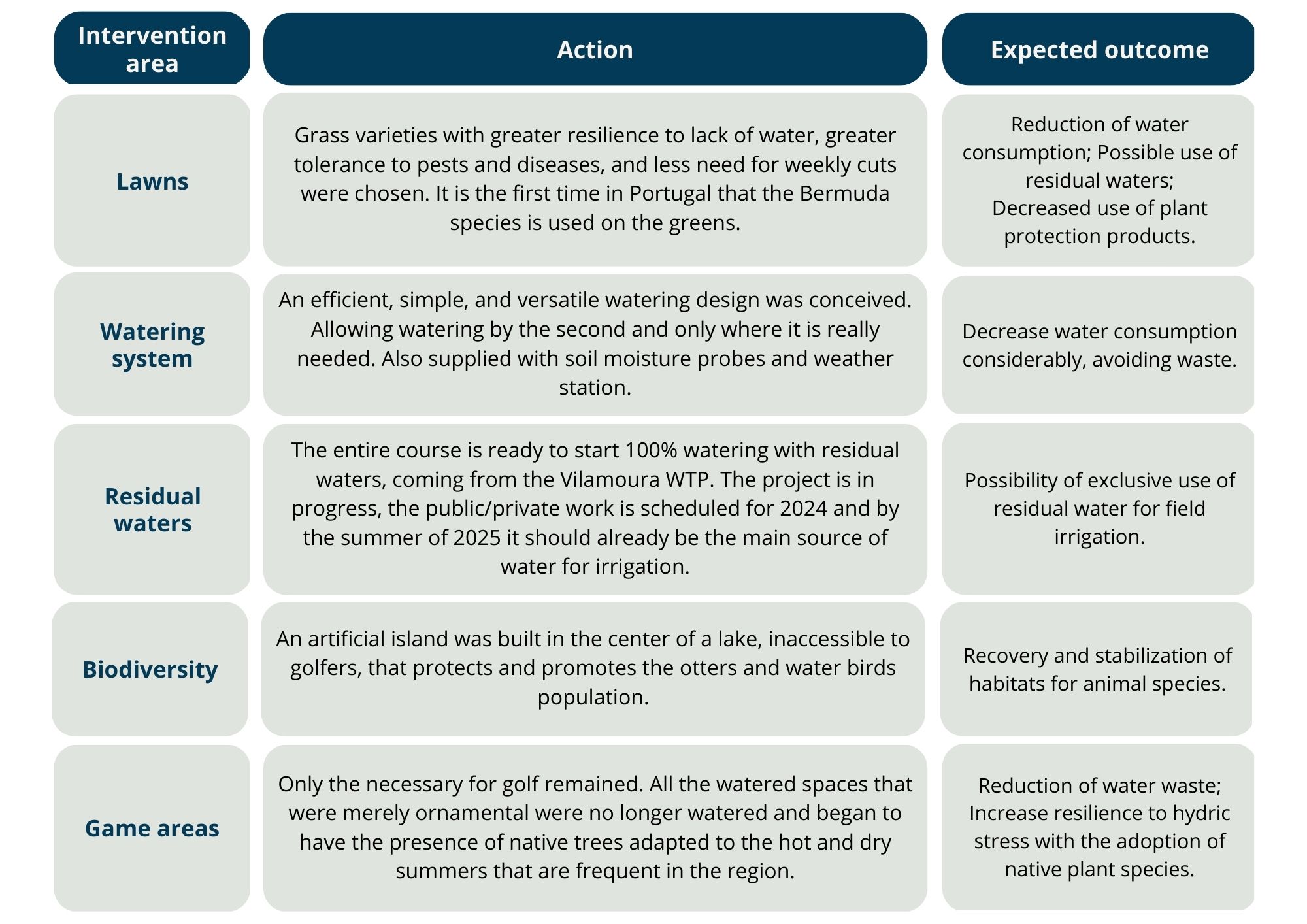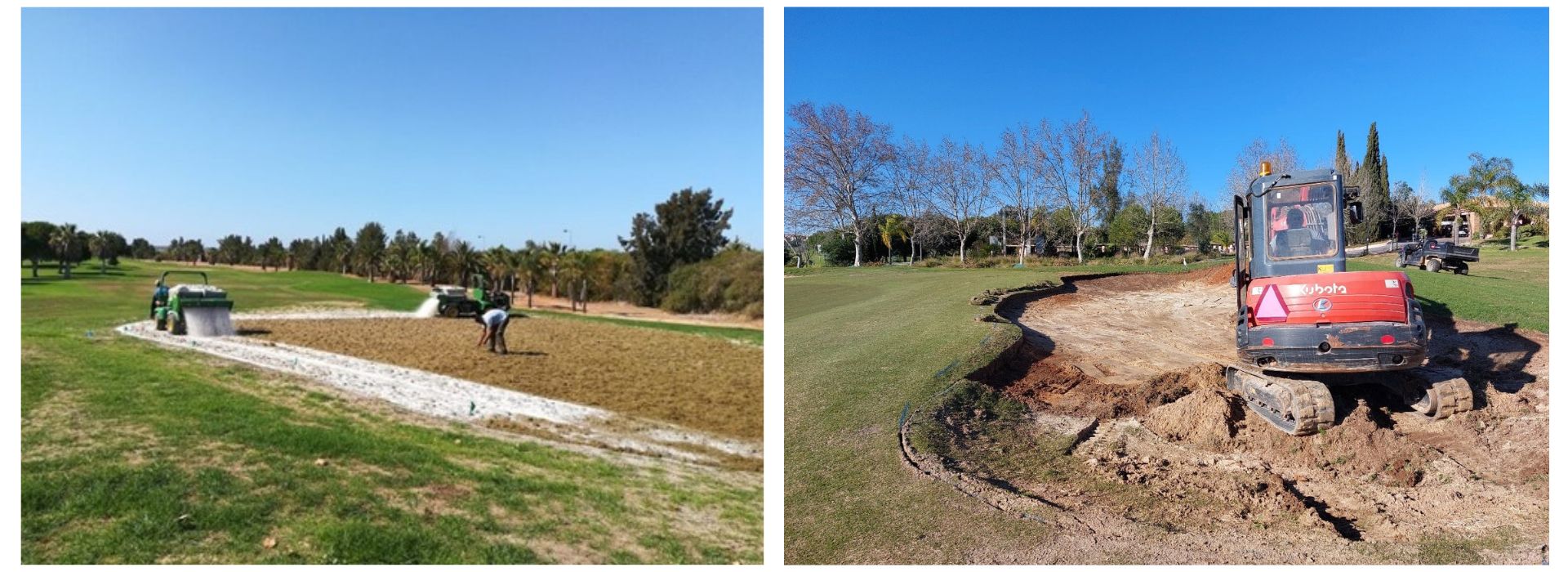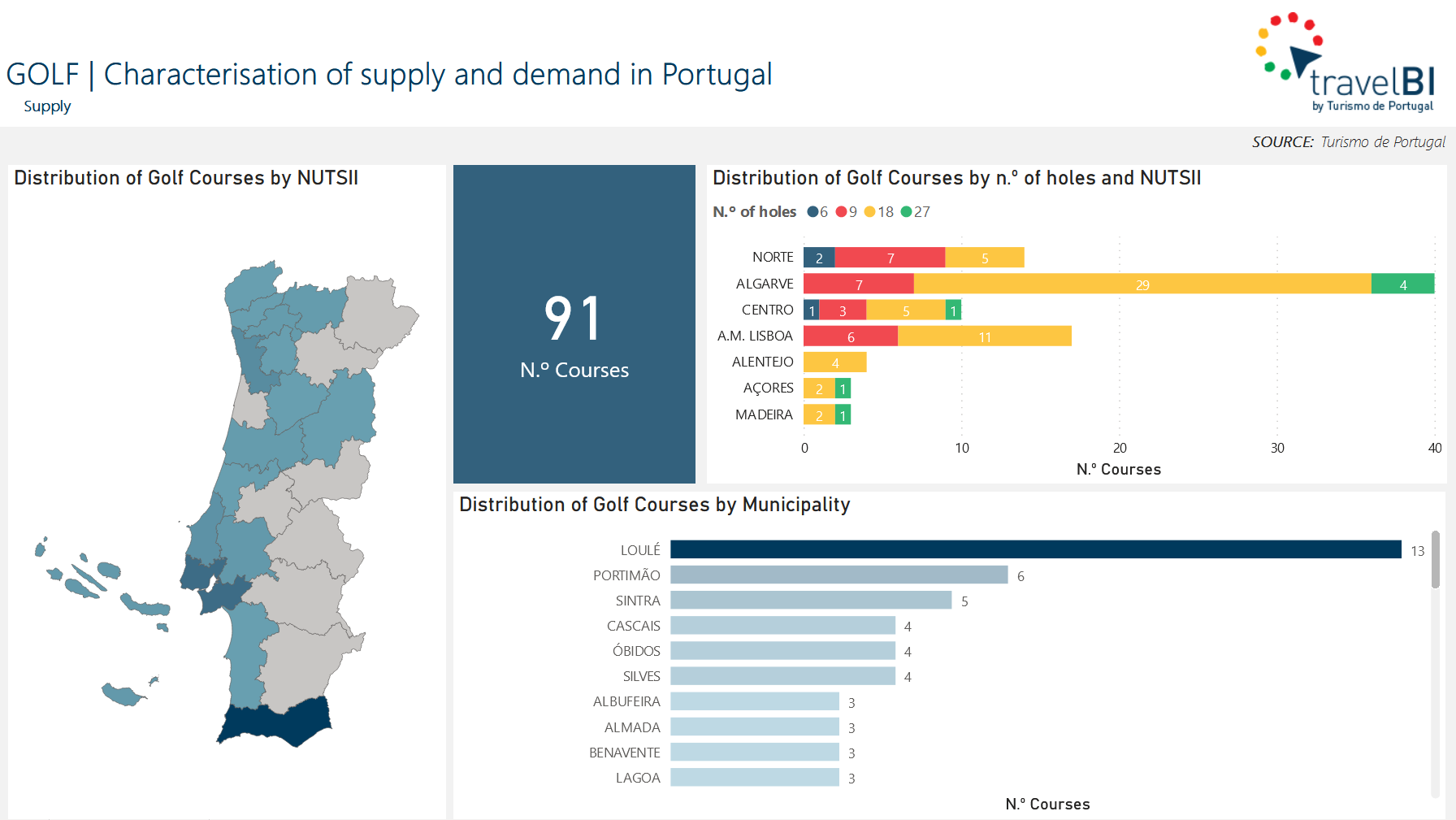Publication
Dom Pedro Golf on the sustainability route
The Dom Pedro Group owns five golf courses in Portugal, all in the Algarve, more specifically in Vilamoura. The concern with the environment is something that is present in its management and to this extent the company is well aware of the relevance of adopting sustainable practices, which allows the preservation of the environment for the future generations, with a rational use of resources. In addition, golfers are usually people close to nature, which reinforces the group’s image, with positive financial implications in the medium and long term.
In order to reinforce the brand’s long term environmental goals, all Dom Pedro golf courses are regularly reviewed and monitored to increase sustainability, as well as the quality of the experience for those who play there. One of the main focuses is water consumption, with the goal of reducing the resort-wide consumption by half. In addition, the resort is working to reduce the use of energy, pesticides and fertilizers, as well as identifying areas for the conservation of important local birdlife.
Dom Pedro Laguna Golf Course, in Vilamoura, was the course chosen to be the first to receive an intervention. Originally designed by the american architect, Joseph Lee, the Dom Pedro Laguna Golf Course is located on relatively flat, open land with many water obstacles. It is often considered different from the other four nearby courses, all owned by the group, and a fundamental piece in the resort’s diverse golf portfolio.
The renovation process of Dom Pedro Laguna began on August 30, 2020, and was completed by August 31, 2022. What truly distinguishes this intervention project in our country and establishes it as an international reference is the fact that its main goal is environmental sustainability, contrary to what is usually done in interventions of this type, which focus on achieving maximum quality with the least environmental impact. But in this case, it was decided to focus on maximum environmental sustainability with the best possible quality, having a direct impact on all the choices made.
The intervention focused on 5 key areas:

The grass areas were completely replaced, with Bermuda species being chosen for the entire course, including all greens, fairways, and tees. This is a type of grass already commonly used in other Portuguese fields, chosen for being less hydric demanding. The innovation is that, for the first time in Portugal, this same species covers all the different areas of the field. The use of this type of grass seems especially appropriate for a region like Algarve, as it has a high tolerance to heat and dryness and a high level of use.
The result was an aesthetically improved and more hydro-efficient field, capable of delivering high quality all year.
In addition, the field was provided with a brand new irrigation system installed - Rain Bird IC - that will increase coverage and reduce water consumption by up to 30% over the entire playing area.
Already before this broad-spectrum intervention, the Laguna Golf Course was an especially rich course in bird biodiversity, given its location and the many water spaces that surround it. However, this intervention was focused on the otter population. This small mammal can be seen frequently in this zone. A collaborative work with Zoomarine, led to the option of creating an aquatic area protected from human touch, where the resident specimens could feel welcomed and protected day by day, to the point of settlement. Therefore, an artificial island was created in the center of one of the largest lakes.

It is expected that, as in several other Algarve golf courses, the use of treated recycled water will soon start, which will significantly reduce the need to rely on traditional supply systems, reducing the pressure on the public supply network.
When the process of redevelopment of the Dom Pedro Laguna is complete, the resource usage will be reduced in an impactful way:
- 50% in water consumption;
- 100% in pesticide use (anticipating community guidelines);
- 20% of fertilizers;
- 20% of electric energy;
- 15% of fossil fuel consumption.
Besides the intervention at Dom Pedro Laguna Golf Course, the company has already started a trial using robots to cut the grass in all the playing areas, except the greens, of the 5 golf courses in Vilamoura. This is a technology based option that will decrease noise, progress in terms of energy transition, reduce energy consumption, mitigate soil compactness, and decrease the consumption of pesticides and fertilizers.
Dom Pedro Golf will constantly control the process, measuring parameters related to lawn quality, productivity, consumption, and golfers' acceptance. The company is aware that the choices made in the present are the ones that will allow the assurance of perpetuating the offer of excellence services, while making it compatible with the environmental sustainability of the whole area where its fields are located.
Source: Dom Pedro Golf

